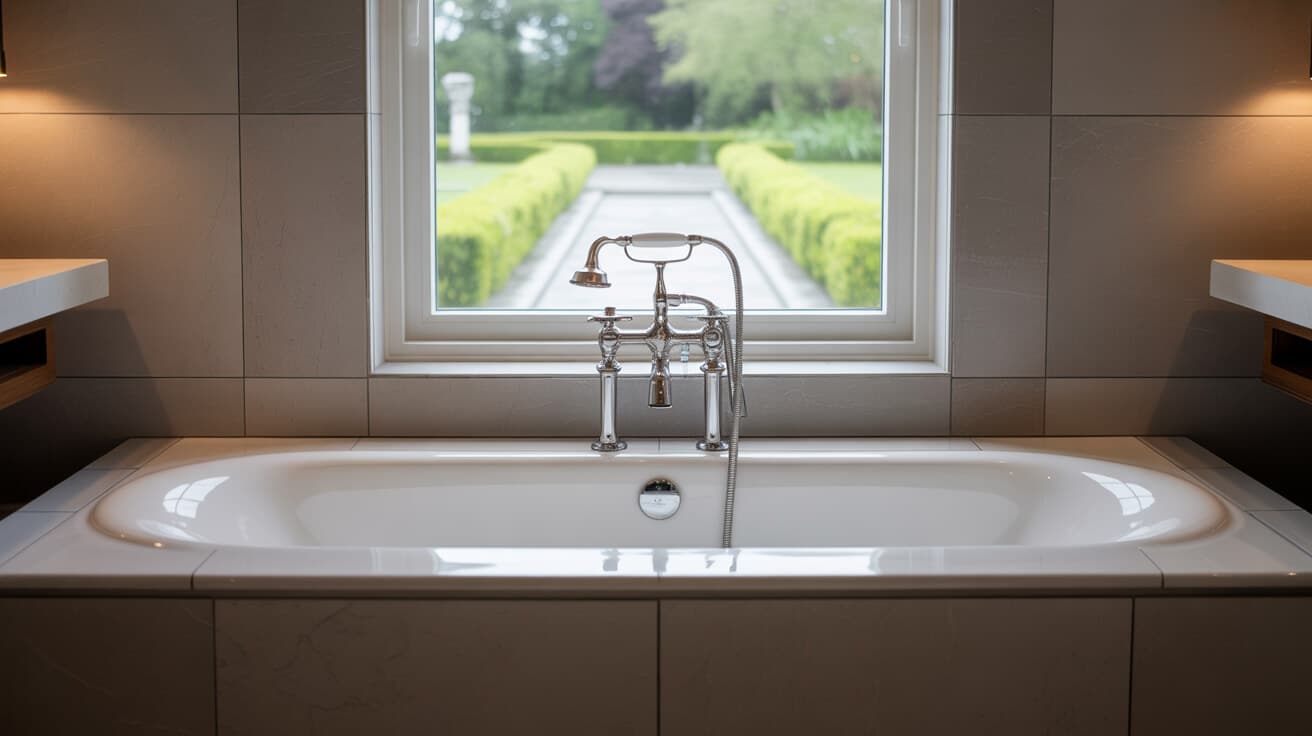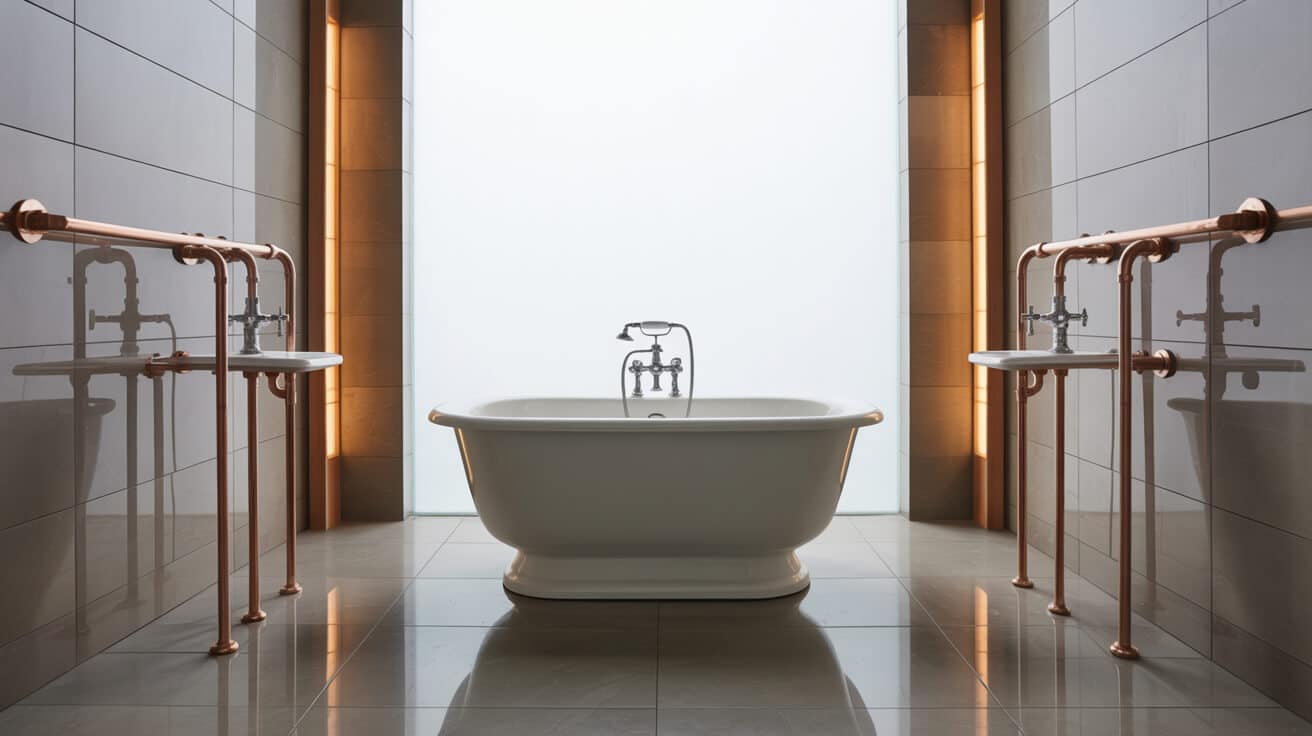WRAS plumbing standards provide a technical and regulatory foundation for the control and delivery of potable water within residential, commercial, and public estates. Officially recognised by water authorities and supported by statutory requirements, WRAS ensures that all fittings and devices in your buildings comply with rigorous mechanical, chemical, hygienic, and functional benchmarks. For organisations such as Plumbers 4U, these standards serve as a universal language bridging building codes, supply chain integrity, installation quality, and the end user’s peace of mind. As the expectations for environmental stewardship and legal clarity intensify, the adoption of WRAS-compliant products and processes remains a cornerstone for property managers, business owners, and facilities specialists seeking assurance for their assets and users.
Etymology or name origin
“Water Regulations Advisory Scheme” derives from the statutory environment established by the Water Supply (Water Fittings) Regulations 1999 and earlier byelaws. The name reflects an evolution from localised control by municipal water engineers to a nationally harmonised scheme, crystallising in WRAS’ foundation as an industry forum and approval body. Over time, “WRAS Approved” has become a common shorthand for fittings and practices that meet or exceed legal requirements for water safety, with the abbreviation securing normative and branding value across the plumbing, building, and supply chain sectors.
Overview / context
WRAS standards exist at the intersection of public health, infrastructure security, and legal compliance, providing a suite of requirements that bind product manufacturers, plumbers, specifiers, property owners, and water suppliers. Regulatory adherence ensures your water supply remains uncontaminated from backflow, leachates, improper storage, or installation error. The scheme’s documentation and assessment protocols serve both legal and risk mitigation goals. Entities such as WaterSafe, Water Regs UK, and Plumbers 4U use WRAS as a core compliance reference to underpin installer training, procurement policy, and customer education. With broader integration into Building Regulations (Part G for sanitation, Part H for drainage), WRAS connects consumer safety to operational and reputational risk for your organisation.
History
Origins
Regulation of water safety traces to statutory health reforms in Victorian Britain, with growing municipal oversight in response to cholera, typhoid, and other communicable diseases linked to contaminated water supplies. Early measures focused on lead reduction, pipe grading, and sanitary layout.
Institutional formation
The proliferation of approved products and inconsistent testing in the twentieth century exposed a critical gap—no central mechanism validated the myriad fittings and appliances entering your water systems. WRAS was founded to centralise product approval, unify guidance, and eliminate regional disparities, thus laying the groundwork for modern compliance.
Major regulatory milestones
The Water Supply (Water Fittings) Regulations 1999 codified public health risk mitigation into UK law, making third-party approval and competent installation a legal requirement. WRAS formalised its position as the gatekeeper for compliance, a status now recognised by water authorities, property insurers, and large-scale facilities operators.
Evolution in technical standards
Regular updates address technological advances, material science, and public health concerns. Examples include revised guidance for PEX/MDPE plastics, enhanced performance edges for thermostatic mixing valves (TMVs), stricter standards on backflow prevention, and digital documentation workflows. Plumbers 4U and other firms keep technical teams current through continuous professional development and manufacturer CPD slots embedded in WRAS’ evolving ecosystem.

Concept and operating principles
Approved fittings and material criteria
An “approved fitting” under WRAS is validated on mechanical integrity, pressure reliability, leachate prevention, chemical stability, and hygienic design. Materials such as copper, lead-free brass, specific grades of plastics, and certified elastomers are assessed for resistance to contamination and degradation. Test standards span pressurised and cyclic flow environments, simulating real-world use within your property or portfolio.
Testing process
Manufacturers submit detailed product batches to accredited laboratories, undergoing assessment against standards from BS 6920, BS EN 806, and additional WRAS-specific protocols. Key test outputs include:
- Chemical and toxicological migration analysis
- Mechanical lifecycle fatigue
- Anti-biofilm and microbial growth studies
- Component compatibility under various temperature regimes
Installer guidance and certification
All installations using WRAS standards are guided by clearly documented best practices, with emphasis on achieving full-bore connections, managing pipe expansion, and calibrating controls for performance and energy efficiency. Certification requires that only qualified personnel (e.g., WaterSafe, WIAPS-accredited installers) carry out the works, with certificate retention forming part of your compliance record.
Compliance documentation and chain of custody
Upon commissioning works, your company or service provider gathers installation, notification, and compliance documents—stored either within a dedicated compliance portal or as part of your asset’s facilities management records. Your maintenance teams or third-party auditors may later reference these records for warranty claims, due diligence, or inspection response.
Application and scope
Domestic installations
WRAS applies to any water system servicing your home, including pipework, stopcocks, tanks, valves, taps, appliances (dishwashers, washing machines), and bathroom specification. New builds, renovation projects, and major refurbishments commonly require WRAS-compliant material and process documentation.
Commercial and industrial settings
For office buildings, hotels, care homes, production facilities, and public sector assets, WRAS standards set the baseline for water risk assessment, approved design, commissioning, and tenant handover. Common high-risk assets include communal storage tanks, RPZ valves, and pipework serving sensitive areas (e.g., healthcare or catering).
Landlord and managed property context
Landlords, letting agents, and property management firms use WRAS compliance as a screening tool when procuring maintenance or fitout services. Compliance documentation is often requested by local authorities or insurance underwriters, forming an essential component of your legal and financial risk management.
Regulatory and supplier touchpoints
Works notifiable to local water suppliers under the Water Supply (Water Fittings) Regulations—such as the installation of RPZ valves, large tanks, communal piping, or any cross-connection device—must pass through a formal WRAS compliance review. Failure to observe notification processes can lead to work refusal, remedial mandates, or fines.
Product approval and certification
Approval process
Manufacturers submit product batches for laboratory testing against WRAS protocols, with certificates awarded only after passing a rigorous battery of mechanical, material, and chemical performance tests. Components are listed in a published directory, referenced in all procurement and technical documentation. Common approval routes involve:
- Test data submission
- Batch traceability
- Design drawings and specification review
- Cross-validation with international standards
Documentation required
Your company must retain approval documents, installation certificates, and maintenance records for all regulated systems. Plumbers 4U’s digital compliance platform allows rapid retrieval and sharing of certificates when required during audits, warranty discussion, or legal proceedings.
Approved laboratories
Only laboratories officially accredited by WRAS or a delegated national authority may conduct these tests. Results are standardised, and any product failing on a single criteria must be re-engineered and retested prior to market re-entry.
Regulatory inspection and enforcement
Each installed component or system is subject to random or scheduled inspection by water authorities, who hold the power to mandate replacement, remediation, or even discontinue supply in the case of severe non-compliance.
Legal and regulatory environment
Water Supply (Water Fittings) Regulations 1999
This regulation mandates the use of approved products and practices to prevent contamination, misuse, and waste of public water supplies. Compliance is enforceable both at the commissioning stage and at subsequent property transfer or insurance review points.
Building Regulations – Parts G and H
Part G sanctions sanitation, hot water safety, and water efficiency, prescribing WRAS standards as the minimal level for performance and safety. Part H covers drainage, waste, and backflow, closely relating to WRAS guidance for cross-connection and risk zone interpretation.
Professional and legal obligations
Only fully qualified, accredited persons may sign off regulated works. Notification is required for all high-risk interventions. Auditable record keeping forms a cornerstone of risk management, with non-compliance subject to fines, injunction, or—where risk is systemic—criminal sanction.
Enforcement agencies
Water companies, local authorities, and select third-party inspectors execute field audits, code reviews, and compliance investigations, often pre-emptively for large installations and reactively when incidents, tenant complaints, or public health risks arise.

Methodologies, tools, and technical practice
Procurement and product selection
Certified procurement teams within your organisation or building operation select only WRAS-approved products, capturing batch, manufacturer, and certificate numbers for documentation. These details are cross-checked prior to installation and during compliance audits.
Installer toolbox
Technicians utilise precision pressure gauges, calibrated torque wrenches, pipe insulation test kits, and laboratory sample vials to verify the suitability and installation quality of fittings. Digital tools track job progress, upload evidence, and provide feedback to supervisors and property managers.
Documentation, reporting, and record keeping
Job sheets, risk assessments, test logs, and certification data are compiled into centralised compliance dashboards. For landlords, letting agents, and commercial operators, such records are essential during property sale, incident investigation, or insurer review. Plumbers 4U offers process integration for seamless compliance submission.
Notification and scheduling protocols
Your organisation must submit pre-work notification to water suppliers for all elevated risk projects. Acceptances, conditional approvals, or rejections are returned, at which point site works begin under detailed oversight and frequent SNAP audits.
Comparative standards
Projects incorporating imported or legacy systems may require cross-referencing with KIWA, NSF, or EN certification. Personnel must verify that all substitutions comply with both UK legislation and WRAS protocol.
Performance, risk, and quality management
Backflow and contamination control
Technical teams in your organisation inspect for high-risk connections—such as external taps, irrigation systems, or chemical dosing equipment—that may create contamination threats. Controls include backflow prevention strategies, air gap enforcement, and double-check valve work.
Audit and inspection schedule
Regular inspections cover visual, mechanical, and chemical metrics. Audits are scheduled around high-occupancy turnover, asset acquisition, or regulatory deadline anniversaries, with findings submitted to local authority records.
Routine maintenance protocols
Maintenance contracts for backflow valves, unvented cylinders, thermostatic mixing valves, and main shut-off points are structured to exceed minimal recall periods. Logs must be updated during site visits, reviewed after every incident, and certified to meet insurance and WRAS thresholds.
Documentation for risk mitigation
All findings and scheduled works are maintained as part of your compliance package. When legal or regulatory queries arise, ready retrieval of these records establishes your commitment to due diligence.
Challenges, barriers, and limitations
Technical and operational challenges
More sophisticated water systems, retrofitting, or new technology often reveal hidden compatibility gaps. Legacy systems require costly workarounds, and fast-moving product cycles can outstrip your staff’s technical expertise or inventory availability.
Socioeconomic and regulatory pressures
Measures intended to expand affordable housing or retrofit public infrastructure frequently introduce compliance ambiguities or reporting lapses. Insurers, tenants, and buyers are increasingly alert to compliance gaps, amplifying reputational and financial risk for your organisation.
Knowledge, training, and asset monitoring gaps
Staff turnover, limited training in regional variations, or underinvestment in compliance software can result in missed deadlines, documentation lapses, or even regulatory non-conformance, with direct implications for warranty or asset transfer processes.
Impact, influence, and legacy
WRAS standards set the foundation for modern, public-health centred water safety in the UK, shaping the regulatory landscape for property managers, building owners, and compliant service providers such as Plumbers 4U. These standards reduce cross-infection risk, safeguard your asset portfolio from legal jeopardy, and enable smoother property transactions. The enduring legacy is institutional trust, transparency, and a culture of excellence in water system safety.
Future directions, cultural relevance, and design discourse
The technical, regulatory, and cultural scope of WRAS plumbing standards continues to expand, shaped by new ecological priorities, green building certifications, and societal demand for transparency. Policy trends include integration with rainwater harvesting, wider adoption of advanced plastic composites, and harmonisation with international testing regimes. Cultural relevance grows as your customers, leaseholders, and public bodies demand overt demonstration of risk management and regulatory conformance. Future design practice is likely to incorporate holistic, digital-first compliance reporting, lifecycle traceability for each component, and increased cross-training for professional teams to maintain constant alignment with evolving WRAS requirements and sector best practice.

